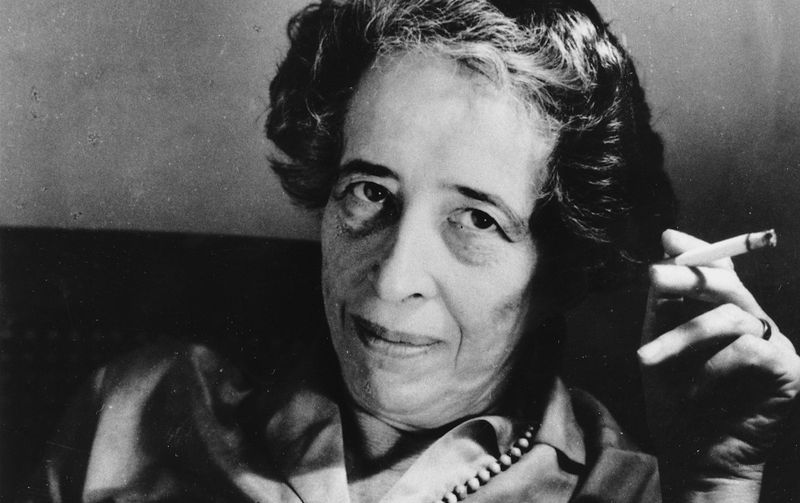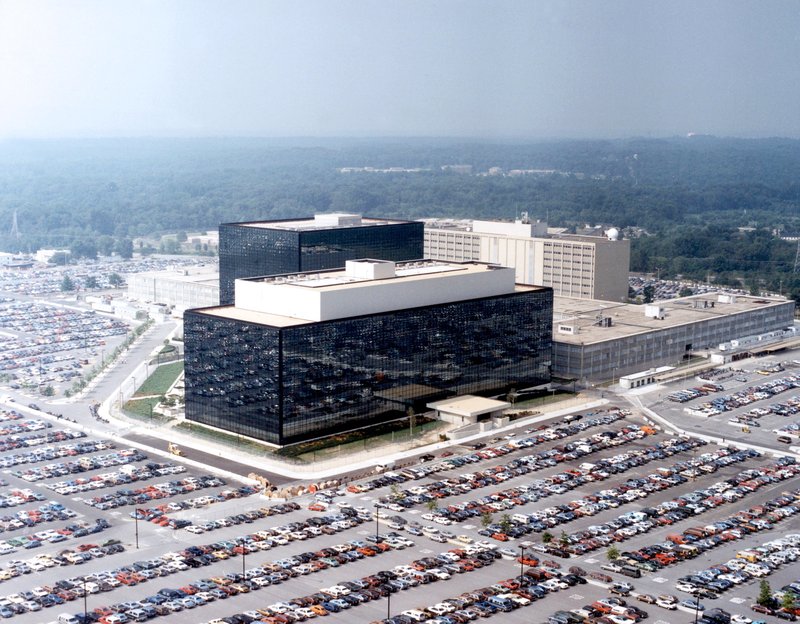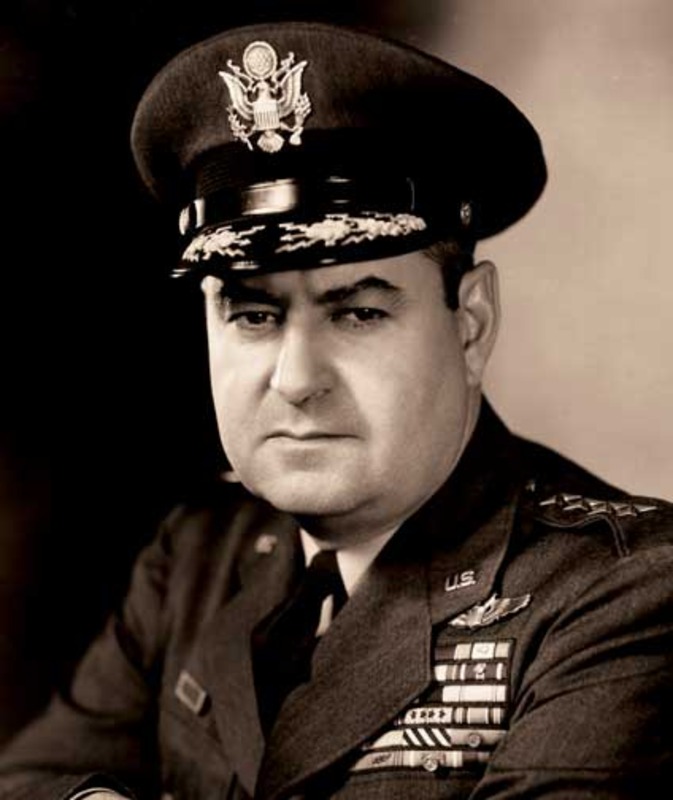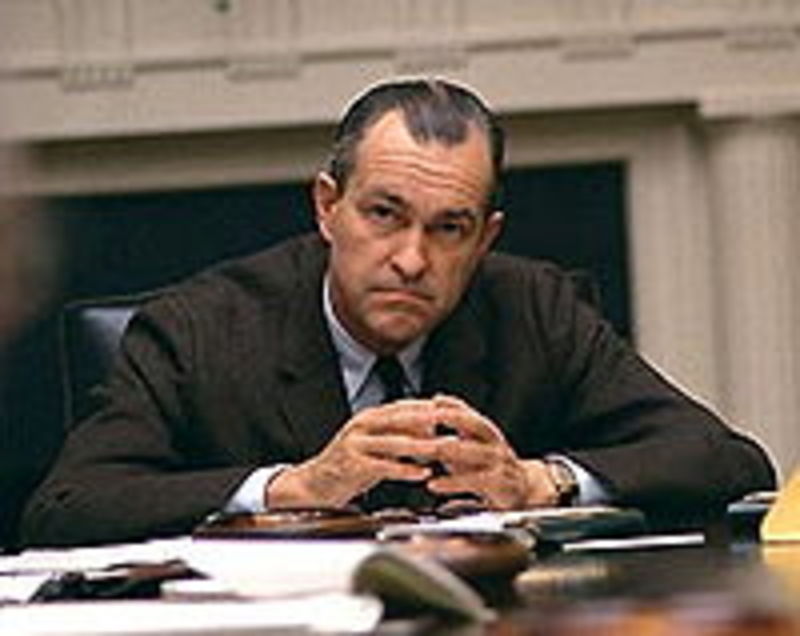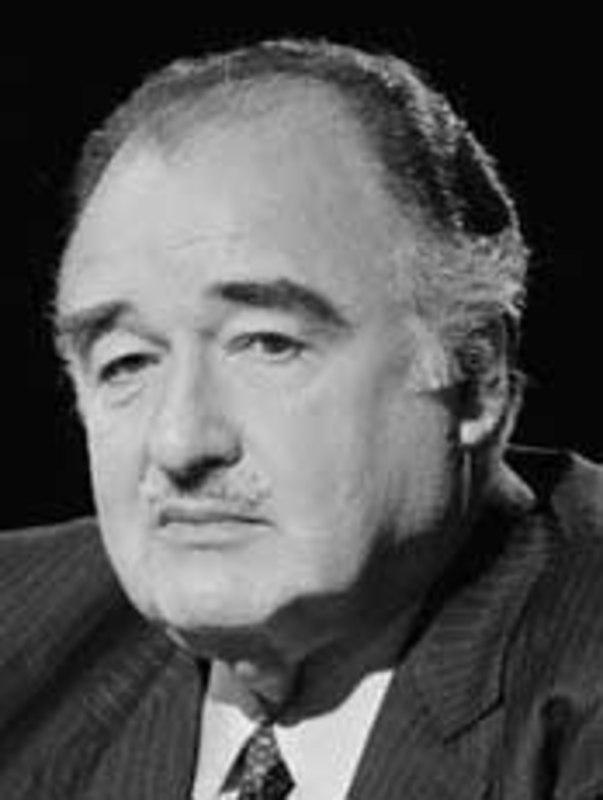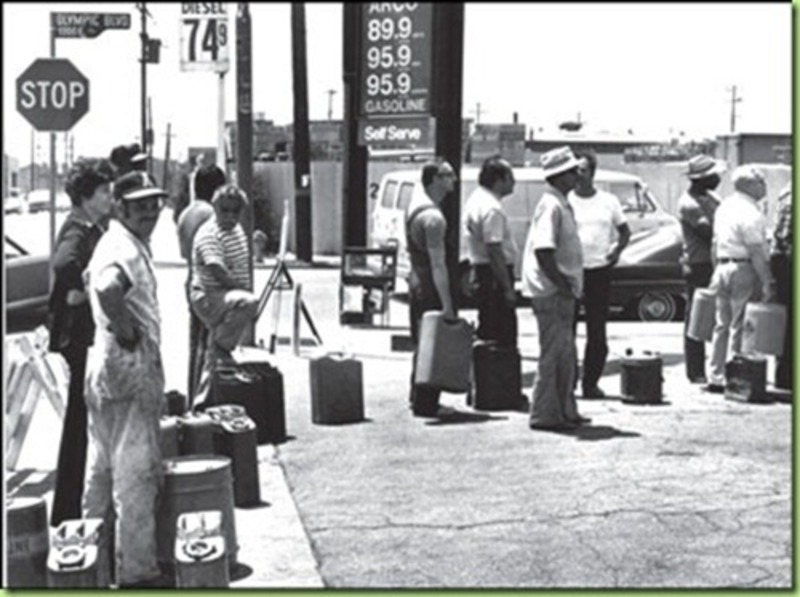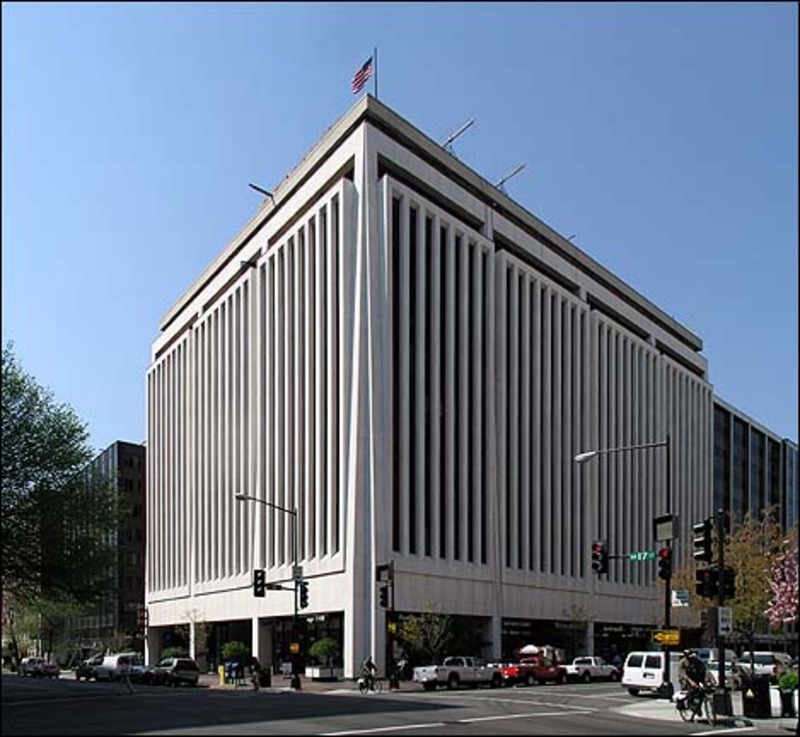In the last decade it has become more and more obvious that we have in America today what the journalists Dana Priest and William Arkin have called
two governments: the one its citizens were familiar with, operated more or less in the open: the other a parallel top secret government whose parts had mushroomed in less than a decade into a gigantic, sprawling universe of its own, visible to only a carefully vetted cadre—and its entirety . . . visible only to God.1
And in 2013, particularly after the military return to power in Egypt, more and more authors referred to this second level as America’s “deep state.”2 Here for example is the Republican analyst Mike Lofgren:
There is the visible government situated around the Mall in Washington, and then there is another, more shadowy, more indefinable government that is not explained in Civics 101 or observable to tourists at the White House or the Capitol. The former is traditional Washington partisan politics: the tip of the iceberg that a public watching C-SPAN sees daily and which is theoretically controllable via elections. The subsurface part of the iceberg I shall call the Deep State, which operates according to its own compass heading regardless of who is formally in power.3
I believe that a significant shift in the relationship between public and deep state power occurred in the 1960s and 1970s, culminating in the Reagan Revolution of 1980. In this period five presidents sought to curtail the powers of the deep state. And as we shall see, the political careers of all five—Kennedy, Johnson, Nixon, Ford and Carter—were cut off in ways that were unusual. One president, Kennedy, was assassinated. Another, Nixon, was forced to resign.
To some extent the interplay of these two forms of power and political organization is found in all societies. The two were defined by Hannah Arendt in the 1960s as “persuasion through arguments” versus “coercion by force.” Arendt, following Thucydides, traced these to the common Greek way of handling domestic affairs, which was persuasion (πείθειν) as well as the common way of handling foreign affairs, which was force and violence (βία).”4 The two represent not just different techniques of government but different cultures and mindsets, in fundamental tension with each other.5
|
Hannah Arendt. Source |
This tension increases, and predictably tips toward violence, if a well-organized open community expands beyond its own borders and is increasingly occupied with the business of supervising an empire. It is repeatedly the case that progressive societies (like America) expand. As their influence expands, their democratic institutions, based at bottom upon persuasive power among equals, are supplemented by new, often secret, institutions of top-down violent power for the control of alien populations abroad, often speaking different and unfamiliar languages. The more the society expands, the more these institutions of violent power encroach upon and supplant the original democracy.
As a result these nations also experience a deeper and deeper politics, much of it a contest between these two types of power. One special feature of American deep politics since World War Two is that much of it has been characterized by a series of conspiratorial deep events: emblematic of the ongoing conflict between these two forms of power and their corresponding mindsets. One is the acknowledged public mindset of openness, egalitarianism, and democracy. The other is the global dominance mindset committed to maintaining and expanding American hegemony. In domestic policy we often analyze the two cultures as liberals versus conservatives; in foreign policy, doves versus hawks. (Yet American liberals when they reach power, such as Hillary Clinton and John Kerry, have also been deeply entwined in the militarization of American politics and its global expansion.) But with the recent expansion since 9/11 of extra-constitutional agencies like the NSA, it is time to supplement these horizontal distinctions with a vertical one: between those agencies constrained by constitutional checks and balances (the public state) and those not so constrained (the deep state). Although the deep state as we have defined it has always existed, its recent radical expansion has brought it into occasional conspiratorial conflict with the public state, even with the president.
|
National Security Agency. Source |
The tension between persuasive and violent power has increased incrementally in recent United States history, from the years after World War Two through to September 11, 2001. We have seen the emergence to dominance of what used to be called the military-industrial complex, and what in my 2010 book I called the American war machine. This is a major change. When Eisenhower warned against the military-industrial complex in 1961, the values, institutions and resources that comprised it were still subordinate elements in American society. Today it not only dominates both parties, but is also financing threats to both these parties from even further to the right. A good measure of this change is that liberal Republicans are as scarce in the Republican Party today as Goldwater Republicans were scarce in that party back in 1960.
That change has been achieved partly by money, but partly also with the assistance of deep events: events, such as the Kennedy assassination, Watergate, the 1980 October Surprise, Iran-Contra, and 9/11, which repeatedly have involved law-breaking and/or violence, have been mysterious to begin with, and whose mystery has been compounded by systematic falsifications in media and internal government records.6
In saying that these deep events have contributed collectively to a major change in American society, I am not attributing them all to a single agent or “secret team.” Rather I see them as flowing in part from the socio-dynamic processes of violent power itself, power associated with and deployed in the service of the global expansion of American military might, which (as history has shown many times) has the effect to transform both societies with surplus power and the individuals exercising that power.7 Insofar as these power processes govern America without deriving from its constitution, we can say that they derive from the milieu of the American deep state.
In discussing the deep events of Dallas, Watergate, Iran-Contra and 9/11, I will argue that, while the mysteries of these deep events cannot at present be fully dispelled by historical analysis (given the tight lock on official documentation), analysis does point to a pattern linking them. In American War Machine I wrote that
the historical succession of deep events—such as Dallas, Watergate, and 9/11—has impacted more and more profoundly on America’s political situation. More specifically, … major foreign wars are typically preceded by deep events like the Tonkin Gulf incidents, 9/11, or the 2001 anthrax attacks. This suggests that what I call the war machine in Washington [the forces striving for global U.S. dominance, including elements both inside and outside government, both inside and outside the United States] may have been behind them.
The continuity between all these successive deception plots suggests that there may be an underlying source for all of them, and that the repeated appearances of external attacks or threats (from North Vietnam, Nicaragua or Iraq) may be false. I will suggest that for at least a half-century the conflict between the two mindsets has given rise to a series of conspiratorial deep events emanating from the hidden recesses of the American war machine all designed to deceive and coerce the American people so as to sustain or further military expansion. I will go further, and argue that this continuity underlies yet other significant deep events that led, not to the start of yet another external war, but to the progressive militarization and political repression of domestic American society.
Later I came to state this conclusion more forcefully:
Since 1959, virtually all of America’s major foreign wars have been wars 1) induced preemptively by the U.S. war machine and/or 2) disguised as responses to unprovoked enemy aggression, with disguises repeatedly engineered by deception deep events, involving in some way elements of the global drug connection.8
These deceptions were not designed to deceive America’s enemies, but first and foremost to deceive the American people, to accept the unilateral initiation by America of illegal wars.
The continuity between all these successive deception plots suggests that the repeated appearances of external attacks or threats (from North Vietnam, Nicaragua or Iraq) have all been false. I will suggest that for at least a half-century the conflict between the two mindsets has given rise to a series of conspiratorial deep events emanating from the hidden recesses of the American war machine all designed to deceive and coerce the American people so as to sustain or further military expansion. I will go further, and argue that this continuity underlies yet other significant deep events that led, not to the start of yet another external war, but to the progressive militarization and political repression of domestic American society.
I will document this conflict between the two mindsets, in one way or another, revealing how it underlies all the major deep events in recent American history: Dallas, Tonkin Gulf, Watergate, the 1980 Republican October Surprise, Iran-Contra, and finally 9/11. These events were needed to achieve American acceptance of both militarized domestic security and successive preemptive foreign wars. The neocons of the Project for the New American Century, PNAC, virtually acknowledged this when they wrote that their program for American dominance was unlikely to be adopted soon, “absent some catastrophic and catalyzing event––like a new Pearl Harbor.”9
Military and CIA Resentment of Presidential Strategies
We can trace what has happened over fifty years through the dramatic change in presidential attitudes toward the Soviet Union. Kennedy, Johnson, and above all Nixon believed in détente with the Soviet Union. Starting under Ford and Carter, and climaxing with Reagan, elements in the United States set out to help destroy what Reagan called “the evil empire.” Saudi Arabian wealth and influence approved of this change and may have been a factor in achieving it.10
The last major achievement of the dove faction was Kennedy’s peaceful resolution of the Cuban Missile crisis in 1962. But the Joint Chiefs had been eager to engage with the Soviet Union, and were furious that Kennedy denied them this chance. Air Force Chief General Curtis LeMay “called the settlement ‘the greatest defeat in our history,’ and urged a prompt invasion.”11 Earlier LeMay had called Kennedy’s blockade tactic “almost as bad as the appeasement at Munich;” and had threatened to take his dissent public.12
|
Curtis LeMay. Source |
There are abundant corroborations for this alarming standoff between the president and his Joint Chiefs. Daniel Ellsberg, who worked in the Pentagon in 1964, told David Talbot that after the Cuban Missile settlement “there was virtually a coup atmosphere in Pentagon circles … a mood of hatred and rage. The atmosphere was poisonous, poisonous.”13 Disagreements over how vigorously to pursue the Vietnam War later divided President Johnson from many of his generals, split his party, and finally persuaded LBJ not to run for re-election.
These resentments survived into the Nixon era. Admiral Elmo R. Zumwalt, Jr., came close to accusing Nixon and Kissinger of treason and Kissinger of being a Soviet sympathizer.14 A book co-authored by retired admiral Chester Ward and published in 1975 charged that Kissinger was not just a Soviet sympathizer but a conscious Soviet agent.15 (With the rise under George W. Bush and Obama of neocons with aggressive agendas, the Joint Chiefs have tended in contrast to play a more restraining role.)16
We have to consider that it was no accident that deep events, the Kennedy assassination and Watergate, cut off the presidencies of both Kennedy and Nixon, both bitterly resented by their generals, and also the only presidents not to serve full terms in the postwar era. Less conspicuously, their successors, Ford and Carter, were also afflicted by deep divisions within their respective administrations. Following the wishes of Congress,
Gerald Ford and Jimmy Carter carried out the largest number of revisions to presidential directives since Eisenhower, carefully rewriting each of the [COG] emergency documents, aware of changes in the Cold War (and the country) since Ike’s Time, and the recent massive unlawfulness on the part of the secret Services.17
Not coincidentally, each of them faced divisions among their supporters; and they became the first and second incumbent presidents to be defeated for reelection since Herbert Hoover in 1932.18
The military figures who protested against presidential restraints on their proposals were not alone in Washington: there was also CIA resistance to presidential efforts to control the agency. The most striking example is perhaps the 1980 election campaign that launched the Reagan Revolution. Robert Parry has demonstrated that this election was preceded by a number of illegal actions – climaxing in the Republican October Surprise — in which both veterans and active employees of the deep state – no longer the servant of the public state but its master – played a significant role. The events of the Republican October Surprise have been characterized — by myself among others — as an escalated reprise of dirty tricks between Republicans and Democrats.19 It is closer to the truth to see them as Robert Parry has done, as in part a CIA revolt (in alliance with Israel) against Jimmy Carter and his house-cleaning CIA Director Stansfield Turner.20
The antagonism between CIA operatives and the White House did not begin with Carter. It was so acute right after the Bay of Pigs and the firing of CIA Director Dulles that Kennedy told one of the highest officials of his Administration that he wanted ‘to splinter the C.I.A. in a thousand pieces and scatter it to the winds.”21 In 1972 Nixon fired Helms after the Watergate break-in because he believed Helms “was out to get him;” and he gave orders to Helms’s replacement, James Schlesinger, “to turn the place inside out.”22
Neither Kennedy nor Nixon finished their terms, let alone their intention to bring the CIA under control. But their successive firings of Dulles and Helms left a toxic resentment inside CIA, especially after Nixon’s CIA Director James Schlesinger then purged more that five hundred analysts and more than one thousand people in all from the clandestine service.23 CIA veteran Arabist Archibald Roosevelt, who was a significant player along with former CIA Director Bush in the October Surprise, believed that Nixon’s appointees as CIA Director – James Schlesinger and William Colby – “had both…betrayed their office by pandering to politicians.”24
CIA resentment and concern was not just directed against presidents. The CIA’s Operations Division was also determined to fight a number of limitations imposed on it in the mid-1970s by the responses of a Democratic Congress to the recommendations of the Senate Select Committee chaired by Senator Frank Church. As a result, even before Carter’s election, a number of the CIA’s allied intelligence services, in France, Egypt, Saudi Arabia, Iran, and Morocco, had allied in the so-called Safari Club to serve as an alternative source of funding and financing of covert operations.25 In this they used the resources and networks of the drug-laundering Bank of Credit and Commerce International (BCCI). CIA assets like Adnan Khashoggi and Bruce Rappaport, assisted by officially retired CIA personnel like Miles Copeland and Jerry Townsend, were part of this global BCCI network. Former Saudi intelligence chief Prince Turki bin Faisal, a key figure in the Safari Club, once admitted candidly that the Safari Club, operating at the level of the deep state, was expressly created to overcome the efforts of Carter and Congress to rein in the CIA.26
But the efforts of former CIA officers to elect Reagan were only part of a larger effort to ensure the defeat of Carter in 1980. As we shall see, an even more important factor in Carter’s defeat was the prior manipulation of oil prices by the U.S. oil majors, to engineer an artificially elevated oil price increase.27
The plight of Jimmy Carter in 1979-80 epitomizes how weak a president can become when he loses the mandate of heaven from the American deep state. First he expressed his determination not to admit the deposed Shah of Iran into the United States, knowing very well that this might result in the seizure of the U.S. Embassy in Tehran.28 But soon thereafter Carter was coerced by the Rockefellers and their man in the White House, Zbigniew Brzezinski, to do just that.29 (Carter, in caving in to Rockefeller’s demands, asked, “What are you guys going to recommend that we do when they take our embassy and hold our people hostage?”)30 In the remaining months of his presidency, his popularity was battered by the long waits at gas stations and convenience stores, generated by a largely artificial gas shortage.31 We can see Carter as a victim of the top-down power of the deep state, which would mean that Carter himself, like Kennedy and Nixon before him, was not on top.
Carter’s defeat by Reagan in 1980 ended two tumultuous decades in which one president (along with his brother) was assassinated, the next chose not to run for re-election, the next was forced to resign, and the two last, despite their incumbencies, failed to be re-elected. In every case, one way or another, tensions between the presidents and the deep state helped terminate the careers of those in the White House.
The Deep State Plots the 1980 Defeat of Jimmy Carter
|
Richard Helms. Source |
The Safari Club was an alliance between national intelligence agencies that wished to compensate for the CIA’s retrenchment in the wake of President Carter’s election and Senator Church’s post-Watergate reforms.
After Carter was elected, the Safari Club allied itself with Richard Helms and Theodore Shackley against the more restrained intelligence policies of Jimmy Carter, according to Joseph Trento. In Trento’s account, the dismissal by William Colby in 1974 of CIA counterintelligence chief James Angleton,
combined with Watergate, is what prompted the Safari Club to start working with [former DCI Richard] Helms [then U.S. Ambassador to Iran] and his most trusted operatives outside of Congressional and even Agency purview. James Angleton said before his death that “Shackley and Helms … began working with outsiders like Adham and Saudi Arabia. The traditional CIA answering to the president was an empty vessel having little more than technical capability.”32
Trento adds that “The Safari Club needed a network of banks to finance its intelligence operations. With the official blessing of George Bush as the head of the CIA, Adham transformed . . . the Bank of Credit and Commerce International (BCCI), into a worldwide money-laundering machine.”33 Trento claims also that the Safari Club then was able to work with some of the controversial CIA operators who had been forced out of the CIA by Turner, and that this was coordinated by Theodore Shackley:
Shackley, who still had ambitions to become DCI, believed that without his many sources and operatives like [Edwin] Wilson, the Safari Club—operating with [former DCI Richard] Helms in charge in Tehran—would be ineffective. . . . Unless Shackley took direct action to complete the privatization of intelligence operations soon, the Safari Club would not have a conduit to [CIA] resources. The solution: create a totally private intelligence network using CIA assets until President Carter could be replaced.34
During the 1980 election campaign each party accused the other of plotting an October Surprise to elect their candidate. Subsequently other journalists, notably Robert Parry, accused CIA veterans on the Reagan campaign, along with Shackley, of an arguably treasonable but successful plot with Iranians to delay return of the U.S. hostages until Reagan took office in January 1981.35
According to Parry, Alexandre de Marenches of the Safari Club arranged for William Casey (a fellow Knight of Malta) to meet with Iranian and Israeli representatives in Paris in July and October 1980, where Casey promised delivery to Iran of needed U.S. armaments in exchange for a delay in the return of the U.S. hostages in Iran.36 Parry also suspects a role of BCCI in the subsequent flow of Israeli armaments to Iran.
|
Alexandre de Marenches. Source |
De Marenches was also a member of the Pinay Circle, “an international right-wing propaganda group which brings together serving or retired intelligence officers and politicians with links to right-wing intelligence factions from most of the countries in Europe.” At a June 1980 meeting of the Pinay Circle “attention was turned towards the American Presidential election that was to bring Reagan to power.”37 (David Rockefeller reports in his Memoirs that at one point in his life he was usually the only American present at meetings of the Circle.)38
A more usual explanation for Carter’s defeat in 1980 was the second oil shock of 1979–1980, in which an acute gas shortage led to both a sudden increase in prices and long gas lines at service stations. It is customary for establishment scholars to blame the shortage on political upheavals in Iran, which led to “a cutoff of Iranian oil.”39
However Robert Sherrill’s close analysis of the American oil industry demonstrates that American oil companies, not Iranian turmoil, were primarily responsible for the gas shortage:
U.S. companies were up to their own strategy . . . . Although in fact America was importing more oil in January and February [1979], during the Iranian shutdown, than it had imported during the same period in 1978, major oil importers pretended that the Iranian “shortage” . . . was real. It was the excuse they gave for slashing the amount of gasoline they supplied to their retail dealers. . . . A CIA study showed that in the first five months of the year, at a time when the Administration was deploring our oil shortage, U.S. companies exported more oil than they had in those glut years 1977 and 1978.40
The oil majors’ manipulation of domestic oil prices, combined with Carter’s failure to bring the hostages home, combined to cause the first defeat for an elected president running for reelection, since that of Herbert Hoover in 1932.
Not mentioned by either mainstream journalists or Sherrill was the role quietly played by Saudi Arabia in augmenting the 1979 gas crisis: “The Saudis had cut production by nearly 1 million barrels a day to 9.5 million at the start of the year [1979], and in April 1979 they made a second cut to 8.5 million. The Saudis had the capacity to produce 12 million barrels a day at that point.”41
|
1979-80 gas line. Source |
The Saudi manipulation of gas prices reflected their acute displeasure with the Camp David Accords of 1978, which did nothing to change Israeli control of Jerusalem.42 But what concerns us here is that the concerted policy of big oil in 1979 was closely aligned with their deep state allies in the Saudi government and the Safari Club, to the severe detriment of Americans and their nominal government, the beleaguered Carter administration.
The oil shock and gas shortage contrived by big oil in 1979, together with the October Surprise, were the chief factors in enabling the subsequent Reagan Revolution. This in turn opened the door for a new phase in “continuity of government” or COG plans, that were secretly prepared over two decades by planners like Donald Rumsfeld and Dick Cheney, and then implemented on 9/11.
Postscript
The door was also opened to the emergence of two-party agreement on a so-called “Washington consensus” in economics, by which we can mean here the increasing deregulation of the private sector and privatization of the public sector. A crucial step in this was Reagan’s decisive end to four decades of power-sharing between labor and capital, by decisively crushing the 1981 strike of the Professional Air Traffic Controllers Organization or PATCO. This completed the transformation of the Republican Party of the 1950s (when the Goldwater conservatives were a fringe minority) into that of the 1980s (when Goldwater was now to the left of the new conservative majority). The era of the Council on Foreign Relations and the Committee for Economic Development had been replaced by the era of the Heritage foundation and the American Enterprise Institute.
|
The American Enterprise Institute, Washington, DC. Source |
Money, including much new money generated by the Vietnam War, was largely responsible for this change. But as I noted in American War Machine (p.38), the CIA played a hand in promoting Chicago School neoliberalism for application in Chile after the Pinochet takeover in 1973. Since 1981, this program of deregulation has been increasingly applied at home. The result has been a major reversal of the capitalist reforms dating back to FDR in the 1930s and to Theodore Roosevelt before him. Instead we have seen restored the disparities of wealth and income that characterized the “gilded age” of the late 19th century. I am not arguing that these unhealthy and dysfunctional disparities were consciously intended. On the contrary I argue elsewhere that it was an overreaction arising from the anxieties of the very wealthy in the 1960s and 1970s, an anxiety urgently shared by elements in the deep state, that control of the country was slipping away from them.43
The deep state also played an important and perhaps decisive role in ending détente. Seeing its role challenged by a series of post-Watergate reforms, the American and indeed the nascent global deep state (represented by the Safari Club) rallied to revive the covert processes of the Cold War under a new name, the so-called “War on Terror.” As I have recounted in The Road to 9/11 (pp. 60-61), the so-called Halloween Massacre of 1975, overseen by Donald Rumsfeld and Dick Cheney in the Ford White House, resulted in a new CIA Director, George H.W. Bush, followed by a somber new reassessment of the “Soviet threat” that helped elect Reagan; and has since been responsible for the massive U.S. defense budget.
Since its success with the Reagan Revolution, the deep state has served chiefly to consolidate a compliant status quo, rather than to change it. But the hegemony of the deep state was not finally established until 9/11, and the implementation of COG.
Peter Dale Scott is a former Canadian diplomat and English Professor at the University of California, Berkeley. His latest book is The American Deep State: Wall Street, Big Oil, and the Attack on U.S. Democracy, being released this month by Rowman & Littlefield. He is also the author of Drugs Oil and War, The Road to 9/11, The War Conspiracy: JFK, 9/11, and the Deep Politics of War, and American War Machine: Deep Politics, the CIA Global Drug Connection and the Road to Afghanistan. His website, which contains a wealth of his writings, is here.
Recommended citation: Peter Dale Scott, “The Fates of American Presidents Who Challenged the Deep State (1963-1980)”, The Asia-Pacific Journal, Vol. 12, Issue 44, No. 4, November 3, 2014.
Notes
1 Dana Priest and William Arkin, Top Secret America: The Rise of the New American Security State (New York: Little Brown, 2011), 52.
2 E.g. Marc Ambinder and D.G. Grady, Deep State: Inside the Government Secrecy Industry (New York: Wiley, 2013); cf. John Tirman, “The Quiet Coup: No, Not Egypt. Here,” HuffingtonPost, July 9, 2013: “Now we know: the United States of America is partially governed by a deep state, undemocratic, secret, aligned with intelligence agencies, spying on friend and foe, lawless in almost every respect.”
3 Mike Lofgren, “ A Shadow Government Controls America,” Reader Supported News, February 22, 2014.
4 Hannah Arendt, Between Past and Future: Eight Exercises in Political Thought (New York: Penguin Books, 1993), 93, emphasis added. Adapting Arendt’s distinction, Jonathan Schell made a Gandhian case in support of nonviolent persuasive or community power as a means of challenging top-down violent power and thus reforming the world. I developed this case myself in The Road to 9/11 (Jonathan Schell, The Unconquerable World: Power, Nonviolence, and the Will of the People [New York: Metropolitan Books/Henry Holt, 2003], 227-31; Peter Dale Scott, The Road to 9/11: Wealth, Empire, and the Future of America [Berkeley: University of California Press, 2007], 249-66, 269).
5 It is one of the special features of America’s richly diverse history that it has seen extreme examples of both persuasive power (the town meetings of New England’s Puritan communities) and violent power (the oppression of slaves and of native Americans).
6 Peter Dale Scott, American War Machine (Lanham, MD: Rowman & Littlefield, 2010), 3.
7 Scott, American War Machine, 31-34, 175-76, 209-11.
8 Scott, American War Machine, 195. In fact all of the major wars were preceded by deceptions, except for the 1980 proxy war in Afghanistan. There, as Brzezinski boasted later in print, a series of U.S. provocations helped draw the Soviet Union into Afghanistan where it suffered defeat.
9 Project for the New American Century, “Rebuilding Americas Defenses,” 2000; discussion in Scott, Road to 9/11, 23-24, etc.
10 Rachel Bronson, Thicker than oil: America’s uneasy partnership with Saudi Arabia
(Oxford: Oxford University Press, 2006), 168: “After a decade of détente, a policy Saudi Arabia never supported, King Fahd welcomed Reagan’s determination to confront Soviet pressure more directly.”
11 Robert Dallek, An Unfinished Life, 570-71; citing Michael Beschloss, Crisis Years, 544.
12 Dallek, An Unfinished Life, 554-55.
13 Talbot, Brothers, 172-73; quoted in Andrew Gavin Marshall, “The National Security State and the Assassination of JFK,” Global Research, November 23, 2010.
14 Kutler, Wars of Watergate, 117, cf. 457–58. Lukas (Nightmare, 105) called the JCS espionage “a natural response to the increasing concentration of national security-making in Kissinger’s NSC.” But the objection to Kissinger had to do with policy as well as with procedures.
15 See Phyllis Schlafly and Chester Ward, Kissinger on the Couch (New Rochelle, N.Y.: Arlington House, 1975). Ward was a retired U.S. admiral.
16 See e.g. Seymour Hersh, “The Red Line and the Rat Line,” London Review of Books, April 17, 2014.
17 William Arkin, American Coup: How a Terrified Government Is Destroying the Constitution (New York: Little Brown, 2013), 34-35.
18 See the discussions of the personnel changes in the so-called Halloween Massacre of October 1975 under Ford, and the contest between Brzezinski and Vance under Carter (Scott, Road to 9/11, 50-92).
19 In 2007 I wrote that they “had a precedent: Nixon’s secret deals with Vietnamese president Nguyen van Thieu in 1968” (Road to 9/11, 100).
20 Robert Parry, “The CIA/Likud Sinking of Jimmy Carter,” Consortiumnews, June 24, 2010: “Inside the CIA, Carter and his CIA Director Stansfield Turner were blamed for firing many of the free-wheeling covert operatives from the Vietnam era, for ousting legendary spymaster Ted Shackley, and for failing to protect longtime U.S. allies (and friends of the CIA), such as Iran’s Shah and Nicaragua’s dictator Anastasio Somoza.”
21 Tom Wicker et al., “C.I.A.: Maker of Policy, or Tool?” New York Times, April 25, 1966; quoted in James W. Douglass, JFK and the Unspeakable: Why He Died and Why It Matters (Maryknoll, NY: Orbis Books, 2008), 15.
22 Weiner, Legacy of Ashes: the history of the CIA (New York: Doubleday, 2007), 374.
23 Weiner, Legacy of ashes, 376.
24 Hugh Wilford, America’s great game: the CIA’s secret Arabists and the shaping of the modern Middle East (New York: Basic Books, 2013), 295.
25 Scott, Road to 9/11, 62-63.
26 Ibrahim Warde, The price of fear: the truth behind the financial war on terror (Berkeley: University of California Press, 2007), 133.
27 Robert Sherrill, The oil follies of 1970-1980: how the petroleum industry stole the show (and much more besides) (Garden City, NY: Anchor Press/Doubleday, 1983).
28 American charge d’affaires Bruce Laingen had warned from Tehran that the Shah should not be admitted until the Embassy had been provided with a protective force, as “the danger of hostages being taken in Iran will persist” (Barry M. Rubin, Paved with Good Intentions: the American experience and Iran [New York: Oxford University Press, 1980], 296-97).
29 Details in Scott, Road to 9/11, 80-92.
30 New York Times, 11/18/79; Pierre Salinger, America Held Hostage: The Secret Negotiations (New York: Doubleday, 1981), 25. Hamilton Jordan, who was one of those present and advising for the Shah’s admission, later gave a more hypothetical version: “What are you guys going to advise me to do if they overrun our embassy and take our people hostages” (Jordan, Crisis, 32). Earlier, on July 27, 1979, Carter had commented that “he did not wish the Shah to be here playing tennis while Americans in Tehran were being kidnapped or even killed” (Zbigniew Brzezinski, Power and Principle: Memoirs of the National Security Advisor, 1977-1981 (New York: Farrar, Straus, Giroux, 1983), 474).
31 See Robert Sherrill, The oil follies of 1970-1980: how the petroleum industry stole the show (and much more besides) (Garden City, NY: Anchor Press/Doubleday, 1983), 470-80.
32 Joseph J. Trento, Prelude to terror: the rogue CIA and the legacy of America’s private intelligence network (New York: Carroll & Graf, 2005), 61.
33 Joseph J. Trento, Prelude to terror, 104-05.
34 Trento, Prelude to terror, 113-14.
35 “In 1980, Shackley was set on putting his former boss, George Bush, in the White House and possibly securing the CIA directorship for himself. Shackley volunteered his prodigious skills to Bush in early 1980. Though that fact has come out before, Shackley’s involvement in the Iran hostage issue, the so-called October Surprise controversy, has been a closely held secret, until now” (Robert Parry, “Bush & a CIA Power Play — The Consortium,” Consortiumnews. Cf. “The CIA/Likud Sinking of Jimmy Carter,” Consortiumnews, June 24, 2010: “Inside the CIA, Carter and his CIA Director Stansfield Turner were blamed for firing many of the free-wheeling covert operatives from the Vietnam era, for ousting legendary spymaster Ted Shackley, and for failing to protect longtime U.S. allies (and friends of the CIA), such as Iran’s Shah and Nicaragua’s dictator Anastasio Somoza.”
36 Robert Parry, Trick or treason: the October surprise mystery (New York: Sheridan Square Press, 1993), 154-55.
37 David Teacher, “The Pinay Circle and Destabilisation in Europe,” Lobster, 18, October 1989.
38 David Rockefeller, Memoirs (New York: Random House, 2002), 412-13.
39 W. Carl Biven, Jimmy Carter’s Economy: Policy in an Age of Limits (Chapel Hill: University of North Carolina Press, 2002), 1: “There were more practical consequences of the Iranian crisis that tested the temper of the public; perhaps the most visible were a gasoline shortage and long lines of cars at gas stations caused by the cutoff of Iranian oil.” Cf. Daniel Yergin, The quest: energy, security and the remaking of the modern world (New York: Penguin Press, 2011), 531: “The Iranian Revolution led to chaos in the oil market, rapid increases in prices, new gas lines, and a second oil shock, and the Carter administration started to come unwound.” In 2007 I myself wrote that “By effectively restricting the access of Iran to the global oil market, the Iranian assets freeze became a factor in the huge oil price increases of 1979-81 (and thus an indirect cause of Carter’s electoral defeat in 1980)” (Peter Dale Scott, The Road to 9/11: Wealth, Empire, and the Future of America (Berkeley: University of California Press, 2007), 88). It was indeed a factor. But in the context I was arguing that the Iranian assets freeze attributed to Carter in 1979 was in fact part of a complex strategy arranged by advisers to the Chase Manhattan Bank. Prominent among these was Archibald Roosevelt, a former CIA officer and colleague of Copeland, whom Parry also accuses of involvement in the Republican October Surprise (Scott, The Road to 9/11, 91; Parry, Trick or treason, 49, 51, 257).
40 Robert Sherrill, The oil follies of 1970-1980: how the petroleum industry stole the show (and much more besides) (Garden City, NY: Anchor Press/Doubleday, 1983), 435-37. In like manner, William Engdahl has attributed the European oil crisis in 1979 to the market behavior of BP (F. William Engdahl, A Century of War: Anglo-American Oil Politics and the New World Order London: Pluto Press, 2004], 173).
41 David B. Ottaway, The king’s messenger: Prince Bandar bin Sultan and America’s tangled relationship with Saudi Arabia (New York: Walker & Company, 2008), 41.
42 Robert Lacey, The Kingdom: Arabia & the House of Sa’ud (New York: Avon, 1981),
452-55: “Crown Prince Fahad decided he must distance himself from Washington. In February 1979 he cancelled a trip he had scheduled to meet President Carter in the following month” (452). In ensuing months of negotiations, Saudis first increased production in late 1979 and then increased their oil price in 1980. At issue also was the Saudi desire to acquire AWACS (airborne warning and control system) aircraft, which were not supplied to them until under Reagan (Ottaway, The king’s messenger, 42-47).
43 Peter Dale Scott, The American Deep State: Wall Street, Big Oil, and the Attack on U.S. Democracy (Lanham, MD: Rowman & Littlefield, 2014), 110.



